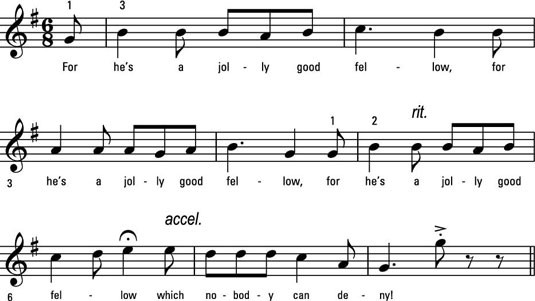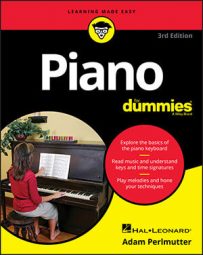Just like you can shade your piano music with dynamics, you can make subtle variations to the tempo of the music you play. The tempo marking at the beginning of a song tells you how fast to play the song.
As a rule of thumb, your goal should always be to keep steady time without unintentionally slowing down or speeding up. But there are times when you do intend to slow down or speed up. Time in music is flexible in this way: You can change tempo very slightly or quite dramatically when the music calls for it.
Not surprisingly, musical words and symbols exist to tell you what to do and how much to do it. And just like the dynamic markings, the words are usually in Italian. The three most important indications you need to know are:
Accelerando: When the composer wants you to pick up some speed, you’ll see this word or its abbreviation, accel. It means accelerate!
Ritardando: When the composer wants you to slow down, you’ll see this word or its abbreviation, rit.
Fermata: When you see the fermata symbol, pause or hold the note(s) under the fermata and stop counting time. There’s no rule governing how long you should hold a fermata — the composer intentionally leaves this to the performer’s discretion. A good starting point is to hold the note(s) under the fermata for twice as long as its written value.
Here’s the melody to “For He’s a Jolly Good Fellow,” which illustrates these tempo changes. In a typically playful rendition of the song, you naturally slow down and hold the highest note, and maybe speed up for the final phrase.


